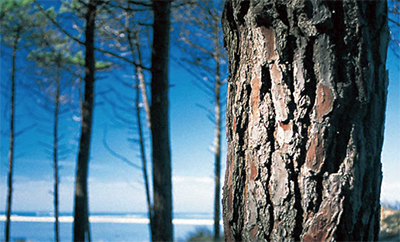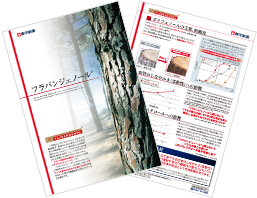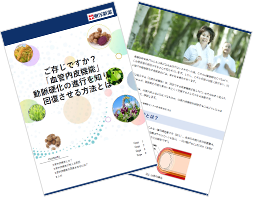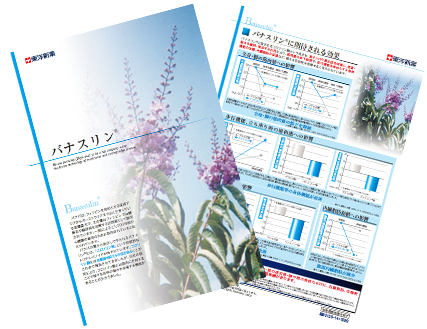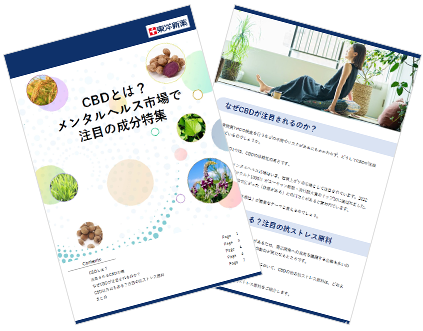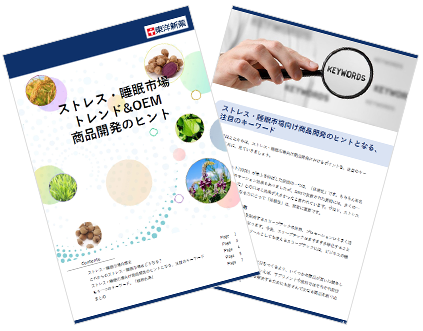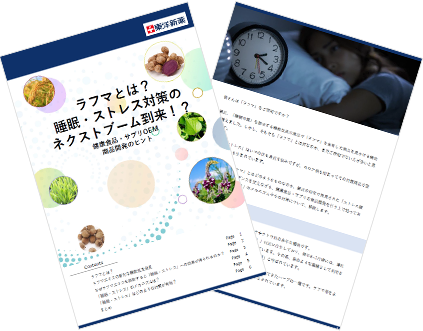A Study on the Effect of Food Containing Pine Bark Extract on Vascular Endothelial Function
-A randomized, Double-blind, Placebo-controlled, Parallel-group Study -
Kohei Fujiki1), Akira Takano1), Hiroshi Tomozawa1), Tomoyasu Kamiya1), Kinya Takagaki1), Masahiko Tokushima2)
1)Toyo Shinyaku Co., Ltd., 2)Maebashi North Hospital
薬理と治療 , 48(5), 853-858, 2020
ABSTRACT(概要)
BMIが30未満の健常成人男女35名を対象に、松樹皮由来プロシアニジンB1及びB3を2.4mg含む食品又は含まない食品のいずれかを8週間摂取させ、摂取前、摂取4週後、摂取8週後における血管内皮機能(FMD)の評価を行った。
その結果、松樹皮由来プロシアニジンB1及びB3を含む食品の摂取により、FMDが増加し、血管内皮機能を改善することが示された。松樹皮由来プロシアニジンB1及びB3の摂取は、血管のしなやかさを維持すると考えられた。
※FMD(血流依存性血管拡張反応):腕を圧迫して開放した後に、動脈がどれだけ拡張するのかを評価する検査であり、血管内皮機能を評価する検査指標として用いられる。血管内皮機能とは、血管の最も内層にある内皮細胞が持つ機能で、血管の収縮と拡張のバランスを調節する(血管のしなやかさを維持する)機能のこと。
フラバンジェノール®関連論文
-

薬理と治療, vol.51, no.1, 129-134, 2023
松樹皮抽出物の毛細血管の血流への作用
-

薬理と治療, 50(12), 2257-65, 2022
松樹皮抽出物含有食品が肌状態に与える影響 -プラセボ対照ランダム化二重盲検並行群間比較試験-
-

薬理と治療, 2021, 49(10), 1749-1755
松樹皮抽出物含有食品の血小板凝集に及ぼす作用 ―プラセボ対照ランダム化二重盲検並行群間試験―
-

薬理と治療 , 47(4), 629-635, 2019
松樹皮抽出物含有食品のLDLコレステロール低下作用確認試験―プラセボ対照ランダム化二重盲検並行群間比較試験―
-

血流改善成分の開発と応用, 第Ⅲ編 血流改善素材・成分 130-137, 2018
第六章 多様な機能性を有する素材「フラバンジェノール®」
-

FRAGRANCE JOURNAL vol.41 no.11, 39-43, 2013
松樹皮抽出物の育毛活性作用とそのメカニズム
-

FOOD STYLE 21 vol.15 no.5, 55-57, 2011
フラバンジェノール®と内外美容
関連学術情報
-

薬理と治療, 51(9), 1289-96, 2023
大麦若葉末含有食品の唾液分泌型免疫グロブリンA産生促進機能および体調に及ぼす影響 -ランダム化二重盲検プラセボ対照並行群間比較試験-
大麦若葉末 -

薬理と治療, 2022, 50(4), 687-694
黒ショウガエキス末の単回摂取による体温への影響 ―プラセボ対照ランダム化二重盲検クロスオーバー試験―
黒ショウガ -

FOOD STYLE 21 vol.15 no.5, 55-57, 2011
フラバンジェノール®と内外美容
フラバンジェノール® -

薬理と治療 , 43(8), 1175-1180, 2015
ターミナリアベリリカ®(Terminalia bellirica)抽出物による食後血中中性脂肪上昇抑制作用の検討-無作為化二重盲検プラセボ対照クロスオーバー試験-
ターミナリアベリリカ™ -

薬理と治療 , 47(4), 629-635, 2019
松樹皮抽出物含有食品のLDLコレステロール低下作用確認試験―プラセボ対照ランダム化二重盲検並行群間比較試験―
フラバンジェノール® -
 学術情報の一覧
学術情報の一覧

